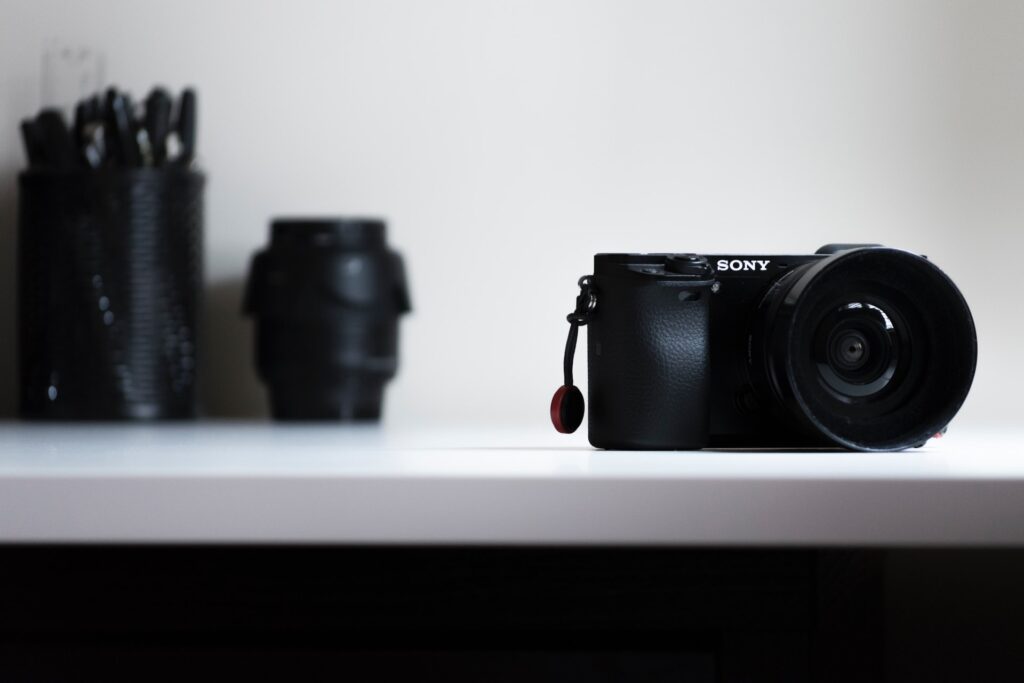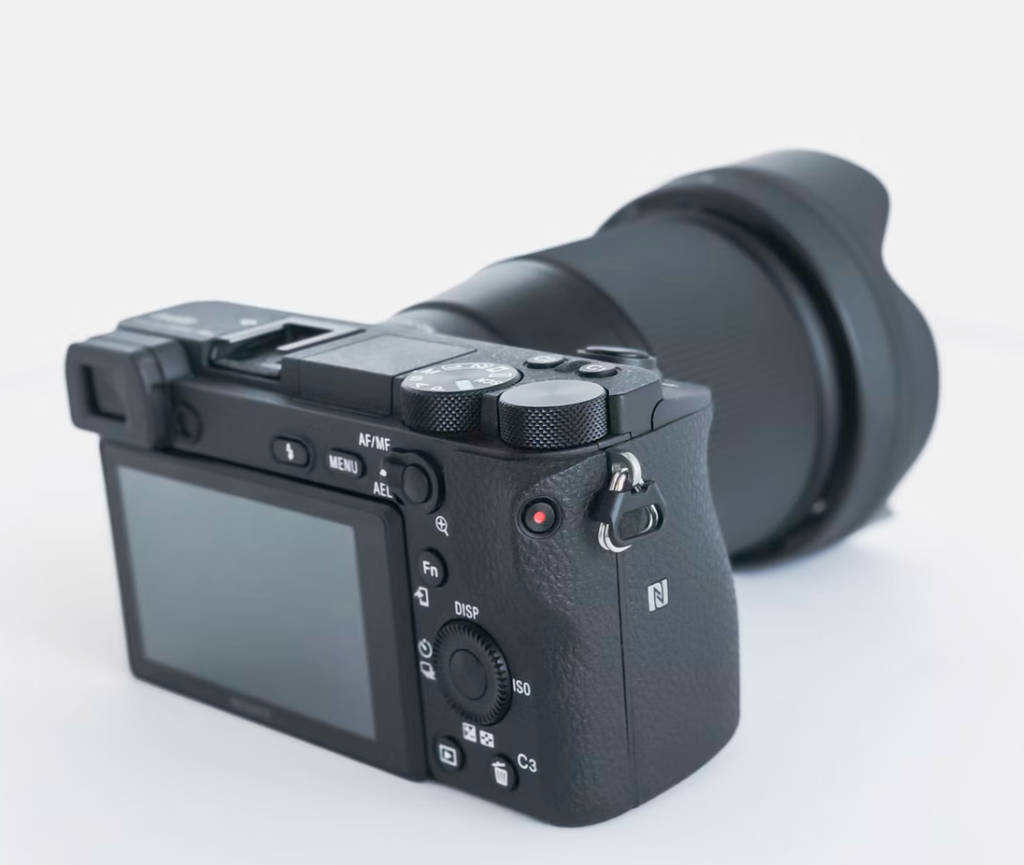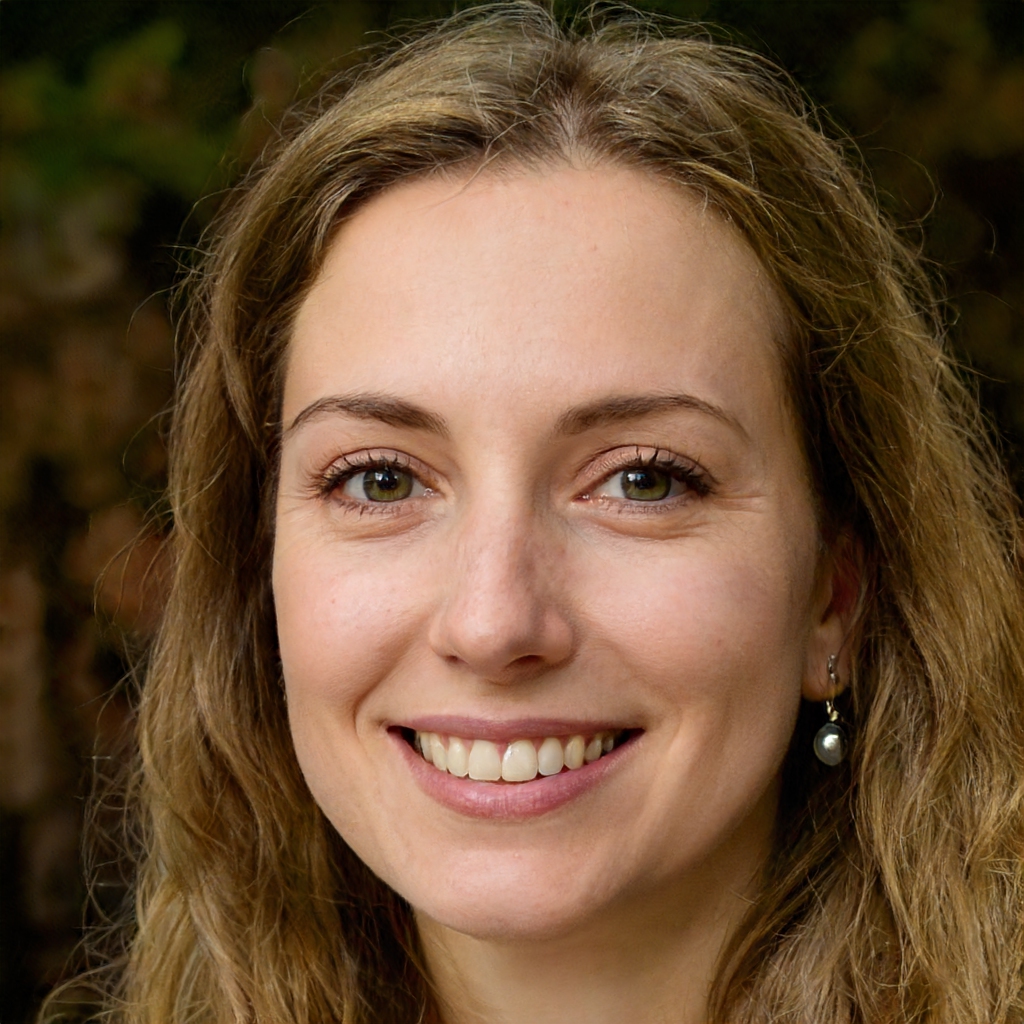In 2024, the Sony a6000 remains an excellent portrait camera:
- High-quality photos are produced by the 24-megapixel APS-C sensor.
- Face detection and eye AF guarantee that subjects are well focused.
- Affordable and high-quality solution for both beginners and expert photographers, with vital features like as an electronic viewfinder, tilting LCD, and a wide ISO range (100-25600).
The accurate face detection and eye AF system ensures that your subjects will always be in focus.
Sony’s a6000 is the camera you want if you’re looking for a camera that’s both affordable and high-quality.
Like my old DSLR Canon 5D Mark II, which is, by the way, an amazing tool for portrait photography, the Sony a6000 is perfect for both novice photographers who are just getting started with their hobby and experienced pros who need something portable that they can take on location without worrying about breaking it.
Here are some portraits that were taken by Sony A6000:



Quick Specs and Features
- 24.3 MP Exmor® APS HD CMOS sensor with BIONZ X™ engine
- Sony E-mount lenses
- Fast Hybrid AF(phase-detection AF/contrast-detection AF)
- 11 FPS Continuous Drive Speed
- Built-in flash
- ISO 100-25600
- .39 in electronic viewfinder with 1,440,000 dots
- 3.0″ wide type TFT LCD
- 1/4000 to 30 sec, Bulb
- 1/160 s flash sync. speed
Why The Sony a6000 is Great For Portrait Photography?

The Sony a6000 is a great choice for portrait photography. This camera has a 24.3 APS-C CMOS megapixel sensor, that is large enough for most people’s needs.
In fact, Sony is one of the best APS-C mirrorless cameras today. With its larger sensor, it allows you to take high-quality pictures with plenty of detail even after cropping.
The autofocus system is very accurate, and it can detect faces and eyes quickly. This means that your subjects will always be in focus.
We all know that we should focus on the eyes of our subjects when shooting their portraits. And this is where the Sony a6000 autofocus shines, it has an excellent autofocus capability.
One of our favorite features is its Eye AF feature, which allows you to lock onto and track an eye in a shot, ensuring that your subject’s eyes are sharp and clear throughout the photo shoot.

This small fantastic camera also has an electronic viewfinder (EVF), so you can see what you’re shooting through the lens before taking the picture. This makes it easier to compose shots and get them right on the first try.
Its 3-inch tilting LCD is actually pretty useful for composing unique angles or getting low-to-the-ground shots.
The Sony a6000 was initially released in 2014, but even today it is still a great camera for beginners, it also has a lot of advanced features that make it a great option for intermediate photographers.
This can be the only camera you’ll ever need to get started, grow your skills, and make your first way as a successful photographer.
Of course, in order for your portraits to really stand out, you should practice good composition, lighting, and getting a good lens to achieve a background blur or bokeh. We will talk more about it below.
Pro tip: You can also use a monopod or a tripod for your Sony a6000 for fast-moving subjects or doing long exposure shots.
Finally, this camera has an impressive ISO range of 100-25600, allowing photographers to capture images in nearly any lighting situation they might encounter—whether indoors or out—without worrying about grainy or blurry results!
Best Portrait Lenses For Sony a6000
There is no one-size-fits-all answer to this question, as the best lens to use for portrait photography depends on a number of factors, including the type of portraits you want to take and the amount of background blur or bokeh you wish to achieve.
However, for your convenience, I will list a few lenses that I believed to be the best options for portraits at the time of this writing (note that these are not necessarily the only good portrait lenses available for Sony a6000 mirrorless cameras, but they are some of my personal favorites).
Sigma 56 1.4 for Sony E-Mount

I have been using this lens for about a year now, and I have to say that I am so happy with my purchase. The Sigma 56mm 1.4 is a must-have portrait lens for Sony APS-C shooters, and I highly recommend it.
I was looking for a sharp lens that would allow me to take great portraits of my friends and family. This lens delivered in every way possible: the images are sharp and vivid, the focus is fast and accurate, and the bokeh is pretty good.
The bokeh is pretty good for a lens of this price point; it’s not going to compare with something like an 85mm F1.4 G Master lens from Sony or Zeiss, but it’s still pretty good for what it is—and nothing about it really stands out as distracting or problematic when viewed at normal sizes on screen or print.
And because Sigma 56 1.4 has an equivalent of 85mm in 35mm format, you can expect more compression of the background than you would with a wider lens.
As I’ve said many times before, this is one of the key reasons why 85mm or longer lenses are preferred for portraits: they’re more flattering for your subject and give you more flexibility in relation to your subject’s distance.
If you want to get into portrait photography, this is definitely a lens worth considering! The images it produces are sharp and have nice contrast–a perfect combination for modern portraits. Plus, it is affordable too!
Sony 35mm f/1.8

Sony 35mm f/1.8 is a great lens for everyday shooting with the Sony a6000. Its built-in image stabilization and fast, accurate focusing make it super easy to shoot with, and the bokeh it produces is beautiful.
The only downside is that it’s not weather-sealed like other Sony lenses, so you’ll have to be more careful when shooting outside (although this is true of most mirrorless cameras).
I really like its build quality—it’s not too heavy, but it feels solid and well-constructed. The focus ring is smooth and easy to use, which is important for me because I often shoot with manual focus.
The image stabilization is also great: I was able to shoot some photos at night without using a tripod or flash, which makes this lens perfect for everyday shooting.
The built-in image stabilization is also great for shooting videos and is especially useful for shooting handheld footage or low-light conditions.
The bokeh produced by this lens is beautiful; it’s soft without being too creamy or mushy looking. It adds just enough character to each photo without overpowering what you’re trying to capture.
Sigma 16mm f/1.4 DC DN Contemporary Lens

We got another one from Sigma and it’s the fantastic Sigma 16mm f/1.4 DC DN Contemporary Lens. I’ve always been a big fan of Sigma’s lenses, but I wasn’t sure what to expect from their 16mm f/1.4 DC DN Contemporary Lens.
I was pleasantly surprised by how sharp it is. The bokeh is also really beautiful—I love the way it renders out-of-focus elements in an image.
It’s a fast lens, which means it lets in more light, so you can shoot at lower ISO in low-light situations and still get great results. The autofocus is quick and accurate, as expected from Sigma, and the image quality is actually really, really good!
I’ve been using it for environmental portraiture lately, but it also works well for landscapes and street photography.
In general, this lens is great for environmental portraits and street photography. The wide angle of view allows you to fit more people into a shot without having them look distorted (not that there’s anything wrong with that!).
If you’re looking for something that will work well for both those things at once—and also just general walkaround shooting—this lens is perfect!
Meike 35mm F1.4

If you’re looking for a great manual focus lens that’s also cheap, look no further than the Meike 35mm F1.4. It’s an ideal choice for beginner portrait photographers who want to get a cheap lens while saving for a better one.
The lens itself has a decent build quality, but it’s not perfect—you have to be careful not to drop it as it can easily chip.
It’s pretty sharp as long as you nail the right focus. Contrary to popular belief, manual focus lenses aren’t that difficult to use. Especially with a mirrorless camera like the Sony a6000. Just take your time and be patient!
Meike 35mm F1.4 Manual Focus Lens is a great lens for the price.
It has a decent build quality and produces beautiful bokeh. The only downside is that it’s not autofocus, so you’ll have to focus manually.
It’s not hard to do, but if you’re used to shooting with autofocus lenses, it might take some getting used to.
Best Settings On Sony a6000 for Portraits

The Sony a6000 is an excellent camera for shooting portraits, especially when paired with a capable lens. There is no one size fits all, but here are some guidelines on how to get the best settings for this kind of photography:
1. Shoot in Raw format, so that you have more flexibility when editing these images later on. (JPEGs if you want more simplicity)
2. Set the metering to multi.
3. Auto White Balance or set to your preferred color temperature
4. Set the ISO to 100 or 200 if you’re shooting in daylight, and between 400 and 1000 if you’re shooting indoors. This will give you high-quality images with plenty of details and without any graininess or noise.
5. Set the camera to aperture priority mode for faster shooting. Set it manual if you want more control.
6. Next, turn on face detection or eye autofocus mode on your camera—this will help it recognize faces when you take shots so you can focus on them more easily.
7. Depending on the location and your intention, use a wide-angle or a telephoto lens. Usually, when I’m shooting indoors I grab my 28mm or 35mm lenses. When shooting outdoors, I usually go with my 85mm.
8. Set the aperture between f1/.4 to f/2
7. Focus on the eyes or face of your subject, and shoot with a shutter speed of around 1/160th of a second or higher.
These steps work well for me when I’m shooting portraits, but experiment and see what works for you. Don’t be afraid to experiment and fiddle around the settings to get your desired results. After all, that’s the best way to learn and improve.
Pro tip: Before shooting, make sure your lens is clean. If there’s any dust or dirt on it, it will show up in your pictures and can ruin the whole thing. So make sure you clean it off with a microfiber cloth or something like that before taking any pictures.
Using Your Sony a6000 to Its Full Potential for Portraits
- The Sony a6000’s portrait shooting skill goes beyond its remarkable technology; realizing its full potential requires knowing its capabilities and making smart decisions. Here’s how you may improve your portrait photography using the Sony a6000:
- Mastering Manual Settings: While the camera’s automated functions are powerful, exploring manual settings gives you more flexibility. Experiment with various apertures to manipulate depth of focus, shutter speeds to achieve distinct effects, and ISO settings to maximize picture quality in a variety of lighting circumstances.
- Using Creative Composition: Improve your portraiture by experimenting with composition strategies. To add depth and visual appeal to your images, use the rule of thirds, experiment with leading lines, and experiment with framing. The Sony a6000’s tilting LCD is useful for creating novel angles and experimenting with unusual viewpoints.
- Dive into Lens Options: The lens you choose has a huge impact on the result of your photos. Consider experimenting with other focal lengths and lens types in addition to the suggested lenses to get diverse effects. The options for telephoto lenses for intimate close-ups and wide-angle lenses for environmental shots are endless. To make the most of your selected lens, get acquainted with it.
- Understanding Lighting Techniques: The core of portrait photography is lighting. Experiment with natural light for its gentle, appealing affects and artificial lighting for more controlled situations. Understanding methods like Rembrandt or split lighting might help you create more professional pictures. Don’t be afraid to play with shadows to generate dramatic effects.
- Even though the camera has outstanding capabilities, post-processing may take your photographs to the next level. Investigate editing tools for fine-tuning exposure, enhancing colors, and refining details. Shooting in RAW format gives you greater post-processing options, enabling you to express your creative vision.
- Continuous Learning and Inspiration: Stay up to speed on the newest portrait photography trends, methods, and inspiration. Follow photography blogs, participate in internet networks, and research prominent portrait photographers’ work. Continuous learning stimulates creativity and maintains your talents in flux.
- Remember that the Sony a6000 is more than simply a camera; it’s a tool that should be used with creativity and enthusiasm. You’ll find new aspects to your portrait photography by mastering its features, experimenting with diverse components, and always polishing your abilities, guaranteeing that the Sony a6000 remains a lasting option for capturing memorable moments in 2024 and beyond.
How Can I Improve My Portraits?
We all know that the Sony a6000 is a very capable camera not just for portraits, but also for landscapes and other kinds of photography and videography as well.
First, apply the settings I wrote above as they can give you a good starting point.
Then you have to familiarize yourself with the Sony a6000’s functions and the way to control your camera. Get a good understanding of exposure, composition, and how to use lenses effectively.
Also, make sure that you have a fine lens for portrait photography (like the Sony 35mm f/1.8 or Sigma 56 1.4), be sure that you’re familiar with the lens’s functions and all its capabilities.
And, most importantly: Practice! Practice! Practice! and Experiment! Experiment! Experiment!

The subject should be relaxed
First things first: when you’re shooting portraits, your goal should be to make sure that the subject is well lit and relaxed. A relaxed and calm subject will always produce better results than someone who’s tense and anxious.
Proper Lighting
If you can, use natural light whenever possible – it’ll make a world of difference in the quality of your photos.
When using artificial lighting, try to position the light source in the front or to the side of your subject so that the shadows are behind them.
This will allow their face to be well-lit and not cast in shadow, which may cause the image to appear too dark or difficult to see the subject’s face clearly. It will also help with getting catchlights in their eyes.
Type of Lens
For starters, it’s important to know what lens you’re going to be using. Different lenses have different focal lengths, which means that they’ll capture different amounts of space.
If you want to get a close-up look at your subject and make them fill the entire frame, you’ll need a telephoto lens—something like 85mm.
If you want more context in your shot, consider using a wider focal length like 28mm or 35mm.
Depth of Field
One more thing to keep in mind is that when shooting portraits, you usually want a shallower depth of field so that the background is blurred and doesn’t distract from your subject.
To achieve this on the Sony a6000, set your camera mode dial to ‘Aperture Priority’ mode (AV), then use an aperture of around f/1.4 to f/2.8.
The best lens for this is usually 35mm or longer. With this camera, lens, and aperture combination, you can create stunning portraits with a fantastic bokeh effect that highlights your subject and make them stand out from their surroundings.
Make sure the background is interesting but not distracting.
You want your model to stand out from their surroundings, but if there are too many distractions behind them it’ll make it harder for people to focus on them instead of whatever else is going on in the frame (like other people).
But of course, there are also a lot of photographers who like to include the background and not totally isolate their subjects (for more context). So it really comes down to what look you’re going for.
Conclusion: Portrait Photography with the Sony a6000 in 2024 and Beyond
Remember that the Sony a6000 is more than simply a camera; it’s a tool that should be used with creativity and enthusiasm. You’ll find new aspects to your portrait photography by mastering its features, experimenting with diverse components, and always polishing your abilities, guaranteeing that the Sony a6000 remains a lasting option for capturing memorable moments in 2024 and beyond.

Emma Lucy is the Founder & CEO of Emma Lucy Photography. She has over a decade of experience shooting weddings and other intimate events. She also tests the latest digital camera bodies, lenses, analog cameras, and other gear from Canon, Nikon, Sony, and other camera brands. She is From London and currently lives in the United States of America, where she spends most of her time as a self-employed professional photographer and writer.
